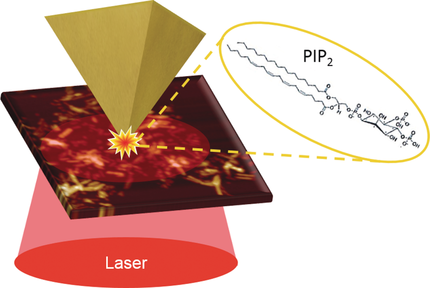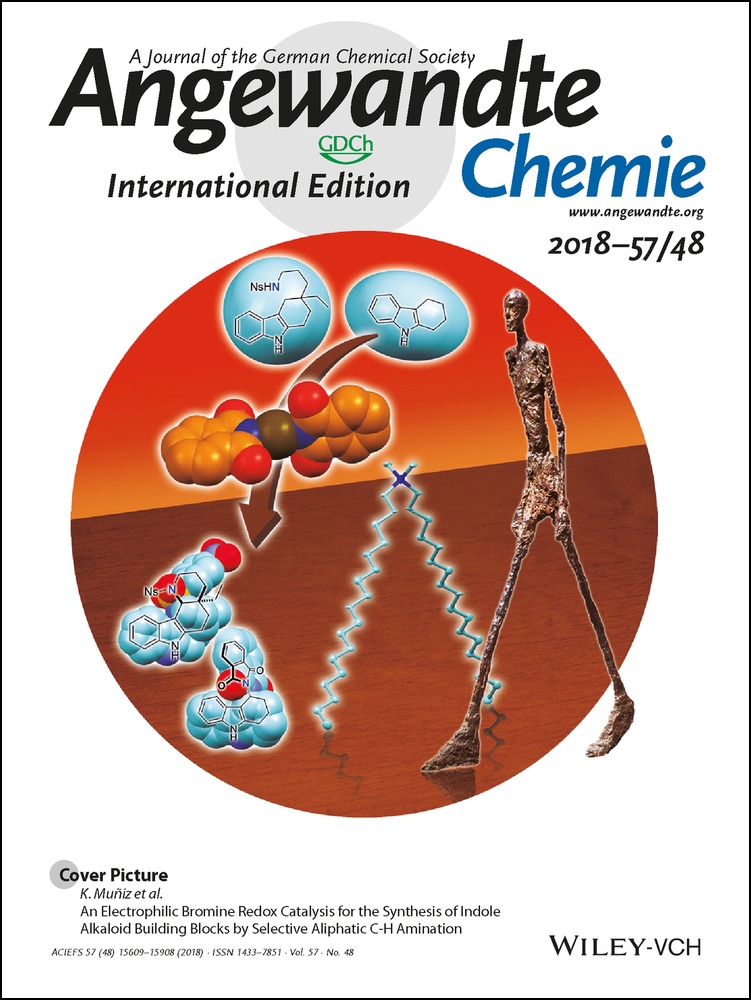PIP2 Phospholipid-Induced Aggregation of Tau Filaments Probed by Tip-Enhanced Raman Spectroscopy
Graphical Abstract
Tip of the iceberg: Tip-enhanced Raman spectroscopy reveals the inclusion of phosphatidylinositol (PIP2) phospholipid in tubulin-associated unit (Tau) filaments and provides an insight into protein secondary structure with nanoscale spatial resolution. Tau/phospholipid aggregates are implicated in deleterious mechanisms on neural membranes in Alzheimer's disease.
Abstract
The morphology and secondary structure of peptide fibers formed by aggregation of tubulin-associated unit (Tau) fragments (K18), in the presence of the inner cytoplasmic membrane phosphatidylinositol component (PIP2) or heparin sodium (HS) as cofactors, are determined with nanoscale (<10 nm) spatial resolution. By means of tip-enhanced Raman spectroscopy (TERS), the inclusion of PIP2 lipids in fibers is determined based on the observation of specific C=O ester vibration modes. Moreover, analysis of amide I and amide III bands suggests that the parallel β-sheet secondary structure content is lower and the random coil content is higher for fibers grown from the PIP2 cofactor instead of HS. These observations highlight the occurrence of some local structural differences between these fibers. This study constitutes the first nanoscale structural characterization of Tau/phospholipid aggregates, which are implicated in deleterious mechanisms on neural membranes in Alzheimer's disease.





